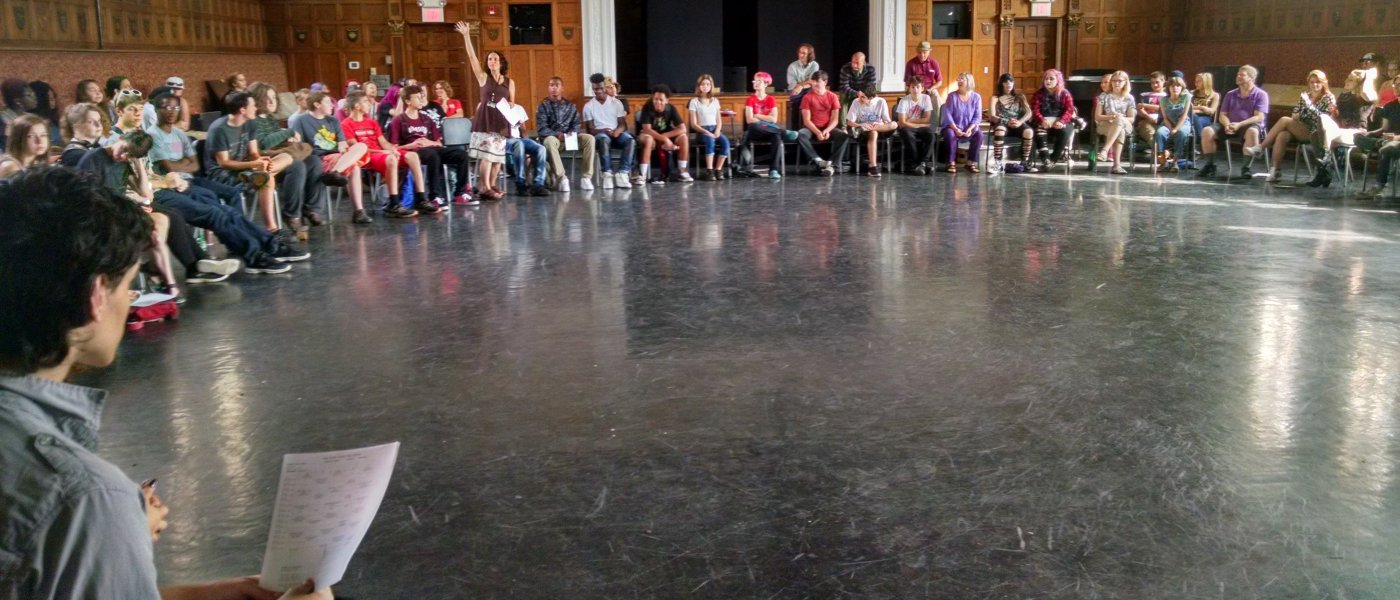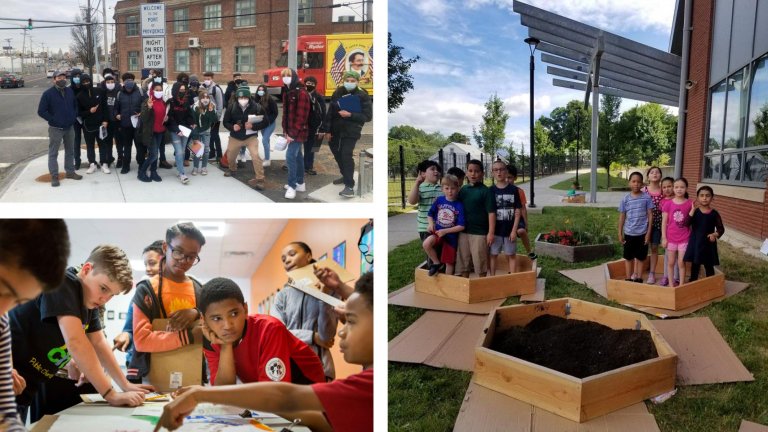New Roots Charter School is a small urban public high school located in the heart of Ithaca, New York. Our mission to educate for sustainability and justice by fostering understanding of the human and natural history of our city and region, and creating strong, respectful working relationships between people of diverse ethnic, racial, and socioeconomic backgrounds.
Our place provides the perfect learning laboratory for the study of the relationship between human and natural systems, the dynamics of racial and economic injustice as drivers of city development, and the impacts of human activity on the ecology of a place. Our four-year curriculum is explicitly designed to reflect sustainability and justice themes and standards, with measured outcomes related to leadership and entrepreneurial thinking. Our program is designed so that students in our lower school have regular field experiences to learn about our place, and that our upper school students identify and act on an issue impacting our community’s sustainability through a Senior Team Capstone project. Our students’ first level of engagement is our day-to-day experience of being part of our downtown community. Our school is located in the historic Clinton House, just a block away from the heart of our city center, the Commons, and bus lines that provide transportation to both other areas of the city and to the region. Our students use facilities within walking distance for dining, physical fitness, assemblies, and other school events.
Our schedule is structured to allow teachers and students to use our urban environment as a learning laboratory on a daily and weekly basis. All core courses are scheduled for three 50- minute periods and one 80-minute block per week, allowing for fieldwork and service learning related to course themes to happen during regular class periods. Our lower school students – freshmen and sophomores – are scheduled for a weekly team-taught, interdisciplinary course that meets in a two-hour block that we call Humanities Expedition, the focus of which is learning about engaging with the local community and natural environment. Our two sections of freshman English and Global Studies classes are also scheduled for back-to-back periods so that teachers can elect to combine the two periods for longer investigations or projects. Our seniors take a course that allows them time for their capstone work and investigations of a local sustainability issue and take action on it. We also offer a three-hour internship block weekly for upper school students. All students participate in school governance through a system involving advisory, Student Council, and Community Meetings.
Other structures in place include Intensives Week courses twice per year, including one week in the October that we call A Sense of Place. During A Sense of Place, advisory groups work as teams to investigate one aspect of our place from an ecological and social perspective, then teach the rest of the school community about what they have learned. This allows each student an in-depth experience of and investment in one facet of our place as well as a view of the whole. Also, once every two months we modify the schedule to allow a block of time for service learning projects. Learning to become an environmental steward and community leader is the focus of our school program, and we have designed our schedule and our program to support our ability to achieve these outcomes.
Ithaca, New York is a college town with an urban center of about 30,000 people, home to Cornell University and Ithaca College. Located in the Finger Lakes Region on the southern end of Cayuga Lake, education and technology are the major industries. The city is surrounded by hills, built on a former marshland in an area that was appropriated from Haudenosaunee people in the wake of the American Revolution just over 200 years ago. Our school attracts a diverse and eclectic group of young people from the wider Ithaca region who live within the boundaries of about 20 school districts, some traveling from up to an hour each way to attend our school. Last year two-thirds of the young people enrolled faced two or more life challenges that would put them at risk of academic failure, including poverty, learning disabilities, school issues, medical conditions, and family traumas. Historically about 40% of our students are from the Ithaca City School District. As a result, we have a unique kind of diversity in our school community, with urban and rural students forging close relationships over their four years together. We also serve students of color and biracial students who live in rural communities surrounding Ithaca who experience social and cultural isolation in those areas, as well as students who have recently moved to Ithaca.



